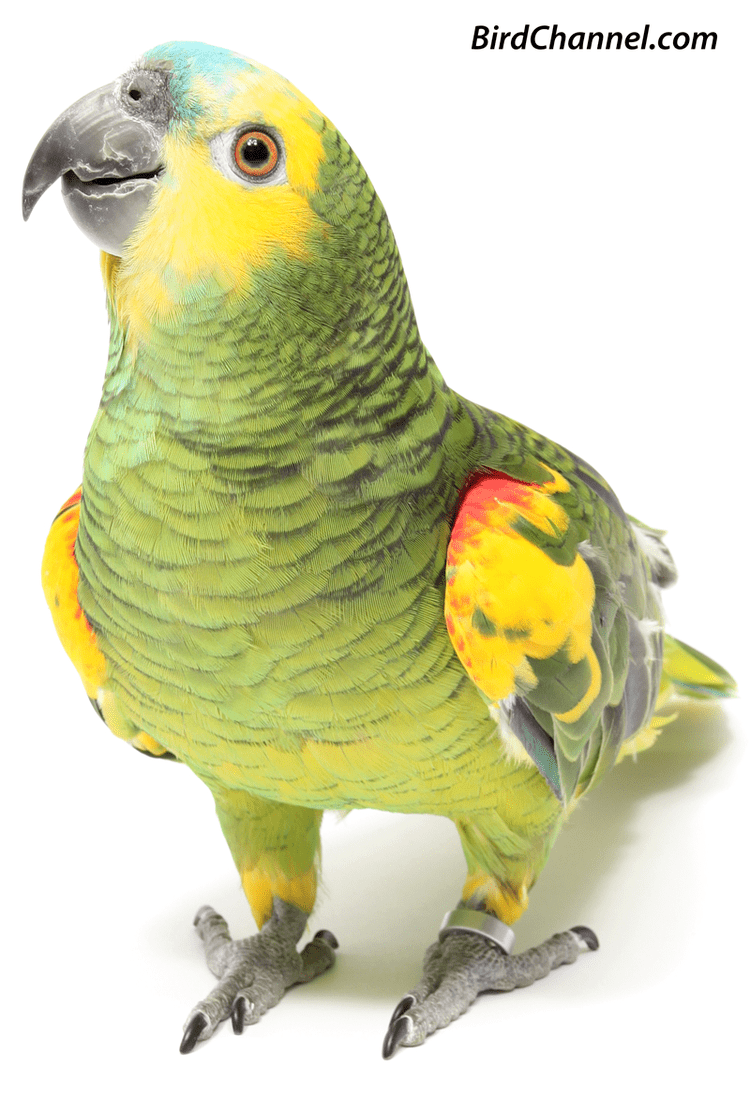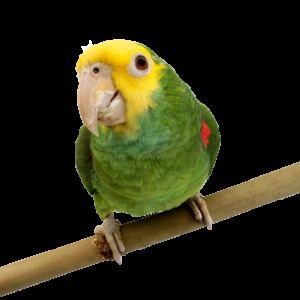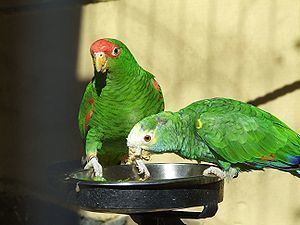Superfamily Psittacoidea Subfamily Arinae Scientific name Amazona Mass Hispaniolan amazon: 250 g | Order Psittaciformes Higher classification Androglossini Clutch size Cuban amazon: 2 – 4 | |
 | ||
Lower classifications Turquoise‑fronted amazon, Yellow‑headed amazon, Orange‑winged amazon, Yellow‑crowned amazon, Yellow‑naped amazon | ||
Talking amazon parrot
Amazon parrot is the common name for a parrot of the genus Amazona. These are medium-sized parrots native to the New World ranging from South America to Mexico and the Caribbean.
Contents
- Talking amazon parrot
- World s best talking bird yellow naped amazon parrot called budge
- Classification
- Reclassification of the yellow faced parrot
- Hypothetically extinct species
- Aviculture
- Gallery
- References

Most amazon parrots are predominantly green, with accenting colors that depend on the species and can be quite vivid. They feed primarily on seeds, nuts, and fruits, supplemented by leafy matter.
Many amazon parrots have a remarkable ability to mimic human speech and other sounds. Partly because of this, they are popular as pets or companion parrots, and a small industry has developed in breeding parrots in captivity for this market. This popularity has led to many parrots being taken from the wild to the extent that some species have become threatened. The Convention on International Trade in Endangered Species of Wild Fauna and Flora treaty has made the capture of wild parrots for the pet trade illegal in an attempt to help protect wild populations.

World s best talking bird yellow naped amazon parrot called budge
Classification

The taxonomy of the yellow-crowned amazon (Amazona ochrocephala complex) is disputed, with some authorities only listing a single species (A. ochrocephala), while others split it into as many as three species (A. ochrocephala, A. auropalliata and A. oratrix). The split is primarily based on differences related to extension of yellow to the plumage and the colour of bill and legs. Phylogenetic analysis of mtDNA do not support the traditional split.
Reclassification of the yellow-faced parrot
The yellow-faced parrot (Alipiopsitta xanthops) was traditionally placed within this genus of amazon parrots, but recent research has shown that it is closer to the short-tailed parrot and the species from the genus Pionus, resulting in it being transferred to the monotypic genus Alipiopsitta.
Hypothetically extinct species
Populations of amazon parrots that lived on the Caribbean islands of Martinique and Guadeloupe are now extinct. It is not known if they were separate species, subspecies, or if they originated from parrots introduced to the islands by humans, so they are regarded as hypothetical extinct species. No evidence of them remains, and their taxonomy may never be established. Populations of several parrot species were described mainly in the unscientific writings of early travelers, and subsequently scientifically described by several naturalists (to have their names linked to the species that they were proposing) mainly in the 20th century, with no more evidence than the earlier observations and without specimens. An illustration of a specimen termed "George Edwards' parrot" has sometimes been considered a possibly distinct, extinct species, but it may also have been a yellow-billed or Cuban amazon with aberrant colouration.
Aviculture
The yellow-headed amazon, yellow-naped amazon, orange-winged amazon, and turquoise-fronted amazon are some of the amazon parrot species which are commonly kept as pets. Amazon parrots, together with macaws and the African grey parrot, are all known for their exceptional vocal abilities, playfulness, and dexterity with their feet. Well-trained parrots can be loyal companions, and they can live for 50 years or sometimes more in captivity. However, some amazons—even well-trained ones—can become aggressive, possibly during mating season. To maintain health and happiness, pet parrots require much more training than domesticated animals such as dogs or even cats. They require understanding, manipulative toys, and rewards for good pet-like behavior, or they can develop quite aggressive behaviors. They have a strong, innate need to chew, thus require safe, destructible toys.
